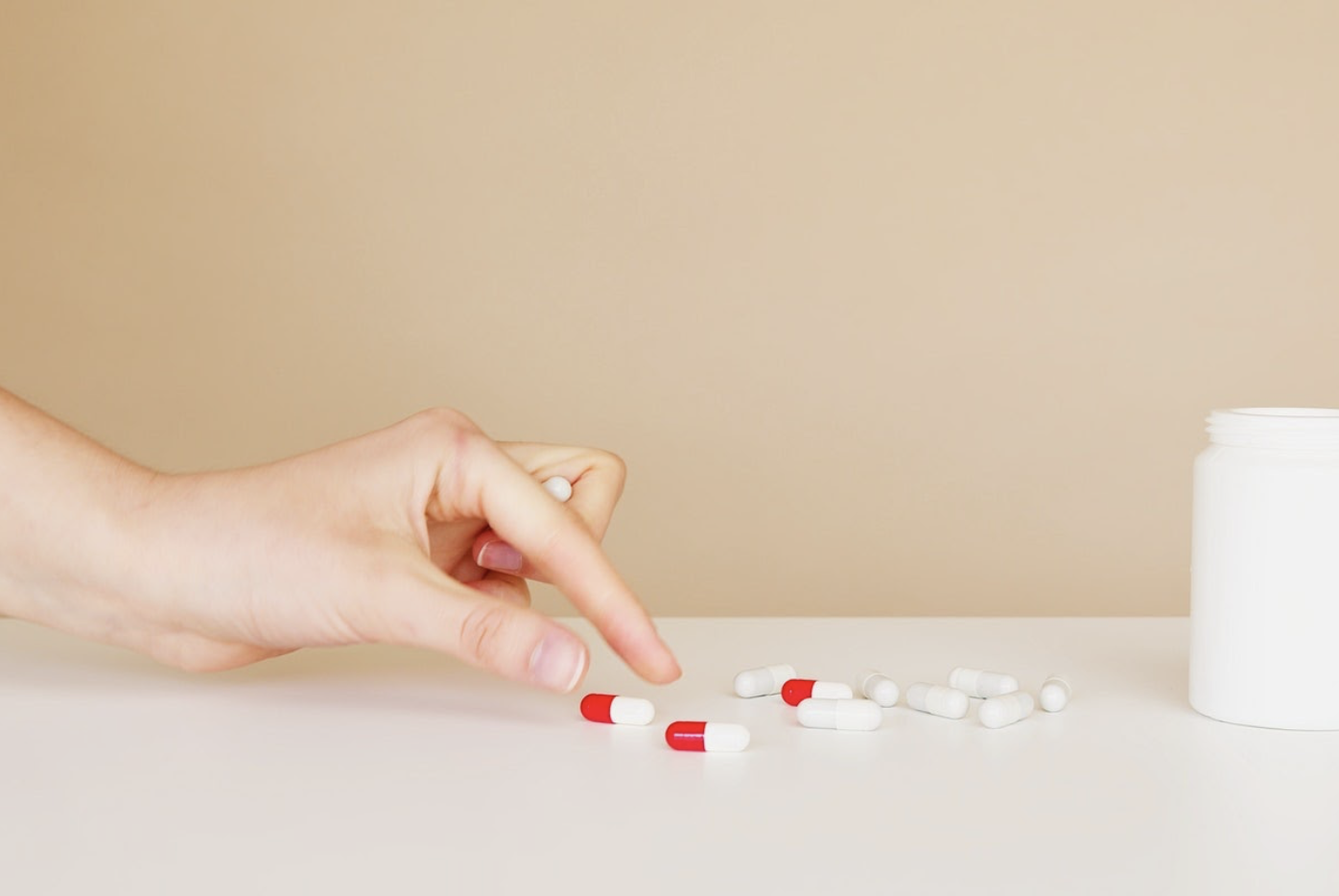When suffering from depression, everyday living is a struggle. Things that were once second nature, like self-care and going grocery shopping, can feel reminiscent of running a marathon sans training. For some, the condition is temporary, but for others, it persists–even in the presence of intervention. If you’re looking for a lasting solution to a long-term problem, TMS might be for you.
When we think of the treatment of mental illness, it’s common to think of an image like this. Medication is one of the most popular ways of intersecting therapy with medical intervention. Still, it’s not the only option out there. Keep reading to learn how it compares to TMS. Image courtesy of Artem Podrez via Pexels.
Machine vs. Medicine
For long-term mental disorders like Depression, Obsessive-Compulsive Disorder (OCD), and Posttraumatic Stress Disorder, the first line of defense is psychotherapy and psychiatry. The goal is to find a cocktail of medication that alleviates symptoms enough to engage with therapy and, as a result, outer life.
Medication is a valuable resource that has proven to positively impact many people. But like any treatment, it doesn’t work for everyone. Its failure could be due to a med allergy or trouble ingesting pills. Though sometimes, it simply isn’t enough.
Treatment-resistant depression and other disorders are more common than you’d think. It’s one of the leading causes of disability for teenagers and adults between the ages of fifteen and forty-four.
So, suppose a large number of people who get treated find that their depression is still severe. In that case, it might be a good idea to consider different paths to healing.
Transcranial Magnetic Stimulation (TMS) is a non-invasive alternative to managing treatment-resistant depression and anxiety. It does, although, treat other ‘off-label’ mental disorders.
Like medication, TMS treatments are done almost daily to benefit sufferers. During a course of treatment, sessions are done five days per week in twenty to forty-minute intervals. On the other hand, medication is taken one to two times per day, depending on the severity of the condition.
The central departure between these two methods is the way they tackle chemical imbalances.
For depression and other mental illnesses, the primary choice for medication is the SSRI (Selective Serotonin Reuptake Inhibitor). Since the clinically depressed brain is often at a serotonin deficit, ingesting this class of drugs introduces chemicals that increase its production.
Transcranial Magnetic Stimulation uses magnetic stimulation to influence the brain’s areas responsible for mood regulation and serotonin production.
In simple terms, TMS stimulates brain chemistry while medication changes it.
It’s important to note that while the two methods differ, they can be beneficial when used simultaneously. Medication is often used as an additive to transcranial magnetic stimulation and can manage symptoms once TMS finishes.
For those of us who have a busy schedule, TMS can be pretty time-consuming. So, of course, we want the effects to prove worth the investment. If you’re considering it, you’ll be happy to know that symptom alleviation goes beyond the session! Image courtesy of Stock.
How Long Do The Effects Of TMS Last?
Almost all who use TMS for persistent depression benefit from it. In fact, one-third of patients leave treatment in full remission. Some even begin to feel a difference after the first session. With those odds, it’s certainly worth a try.
Depending on the severity of the depression or other presenting illness, TMS treatment will typically range from four to six weeks. Though its course is time-intensive, the length of the effects makes the time spent worth it.
So how long does the relief last?
Like most treatment methods, the effects of TMS do not last forever.
Still, studies have shown promising results. At the lower end, Transcranial Magnetic Stimulation’s positive effects lasted for six months. Many patients, however, continued to notice improvement or complete remission a year later.
For those who’ve had a positive experience with TMS, the first round doesn’t have to be the last. When things begin to taper off, clients may consider going through what’s called ‘re-induction.’
Since TMS is relatively low-risk, there isn’t a limit on how many times patients can receive it. Most often, clients will use it again if depressive symptoms begin to worsen. Suppose it’s worked to mitigate an episode of Major Depressive Disorder in the past. In that case, it’s likely to yield positive results again. Tune-ups come in handy as it’s common for people living with depression to go through these episodes–though they may cease after a singular course of TMS.
Stress is an unavoidable part of life. And for those suffering from severe depression, it can be drowning. If you’re looking for relief, consider TMS. When it’s over, you might just find yourself handling the calm and chaos in stride. Image courtesy of Andrea Piacquadio via Pexels.
Personalizing The Effects
Statistics and explanations help us make informed decisions, but hearing stories enable us to imagine sitting in the TMS chair.
In her book, 3000 Pulses Later, Martha Rhodes talks about what she calls her “Medication Merry-Go-Round.”
Under the guidance of her psychiatrist, she tried a slew of medications in an effort to soothe her severe depression. After years of ingesting SSRIs to no avail, she ceased seeing her treatment provider and taking her medications at once (Note: this is NOT advisable. Stopping psychotropic medication should always be done under medical supervision).
As one can imagine, this left her sinking into her depression. Anyone who’s experienced severe depression knows how agonizing it is, but for Rhodes, the pain was motivation to find other options. At the time, the options were Electroconvulsive Therapy (ECT) and Transcranial Magnetic Stimulation (TMS).
While she considers ECT to be a perfectly viable option for treating severe depression, the risk of potential memory loss and the general invasive nature of the procedure dissuaded her.
TMS, alternatively, was a middle-ground between medication and ECT. It was relatively painless, there was no potential for memory loss, and it was outpatient.
Most significantly, she found relief. She writes–
“I noticed the music I listened to during my drives to and from my treatments was more upbeat, and I found myself actually singing to the music. I began reaching out to friends again to talk on the phone, and go out to dinner–and I actually caught myself laughing. My energy increased and life felt amazingly manageable.”
If you feel you’re ready to try something new that lasts and has stats to back it up, look into other options. It has the power to find that light that’s struggled to turn on and flip the switch. Try not to be too surprised when you start feeling like yourself again, it’s all in the TMS prescription.




